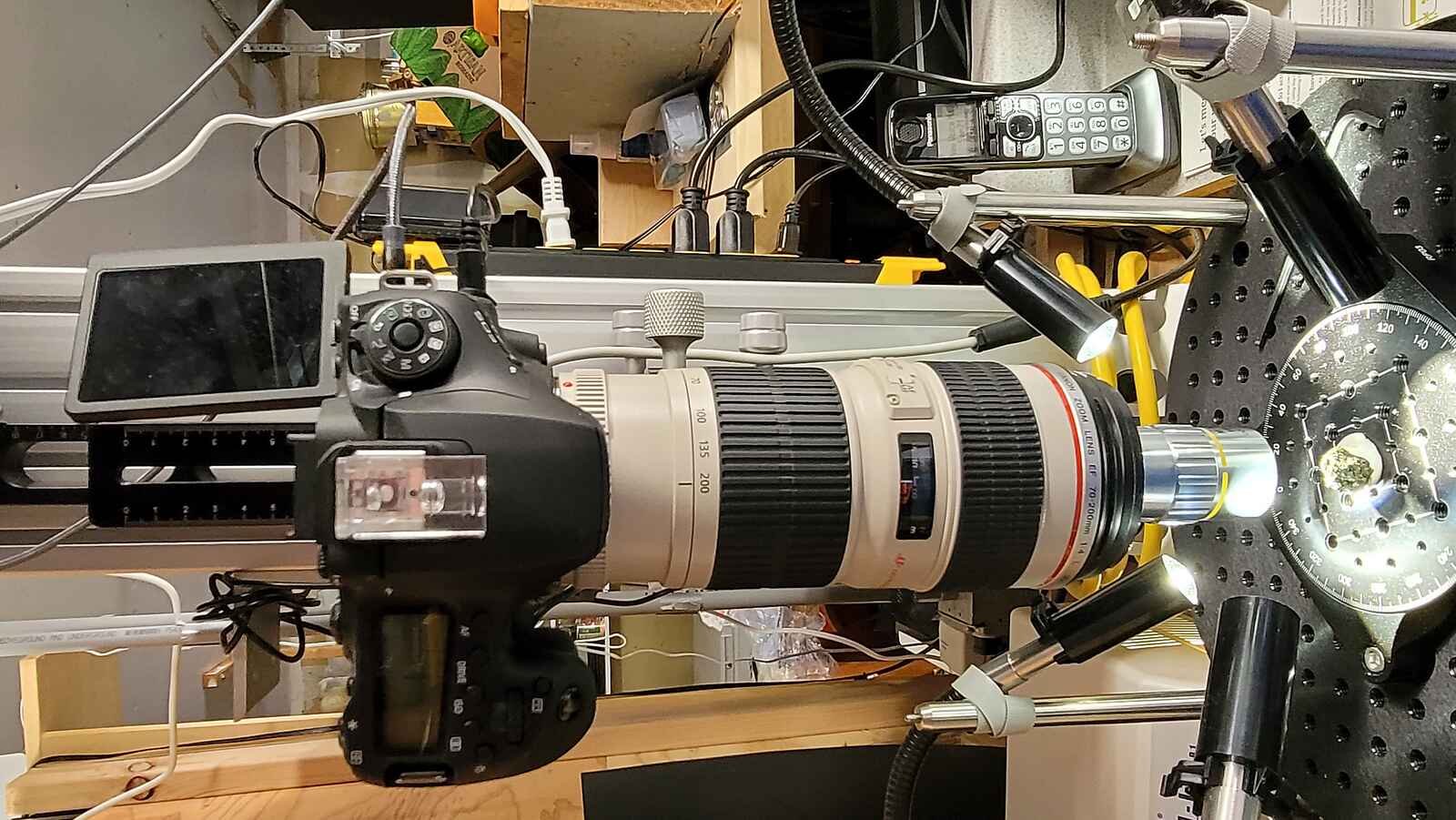
I shoot in RAW with the images going to an external hard drive. Next I import then into Lightroom for some minor adjustments. Files are then exported to Helicon Focus for stacking. Final adjustments are made in Photoshop and Topaz Labs Adjust AI. Photos are saved as PNG for Mindat and jpeg for Facebook and Mastodon.
I still have the camera mounted on a Stack Shot rail controlled by the control module in Zerene. I now use Helicon Focus for stacking. Many of the folks I know have switched to Helicon.

 Note: The Canon 90D is an APS-C camera with 32 megapixels.
He uses the 70-200 lens zoomed to 200mm and focused on infinity.
Note: The Canon 90D is an APS-C camera with 32 megapixels.
He uses the 70-200 lens zoomed to 200mm and focused on infinity.
Helicon has 3 stacking option - weighted average, depth map and pyramid. Weighted average is not good for mineral photography. I use method B which uses the depth map process and method C which is pyramid process. I will run both as there are times when one is better than the other. One notable difference being that Helicon does not give the blurred edges that one finds on 2 sides for a Zerene stack. Helicon crops those out. I find the depth map method in Helicon give better results then Zerene. I have found Helicon to be faster at running the stacks, especially if your video card supports open GL and it is enabled in the stacking program preferences. Not sure if Zerene has this function as I have not used it since I got my new Puget Systems computer a couple of years ago.
If you are using a Stack Shot rail for automated stacking, Zerene has the better control module for computer control of the rail. I still use Zerene for that. It is much easier to use than making the settings on the control box that comes with the rail. You still use that but all programing is done on the computer.
That lipscombite specimen was an easy one to shoot as it was well exposed making it easy to illuminate. Many of the specimens I shoot are not so easy.
Tom's Computer Info / [email protected]